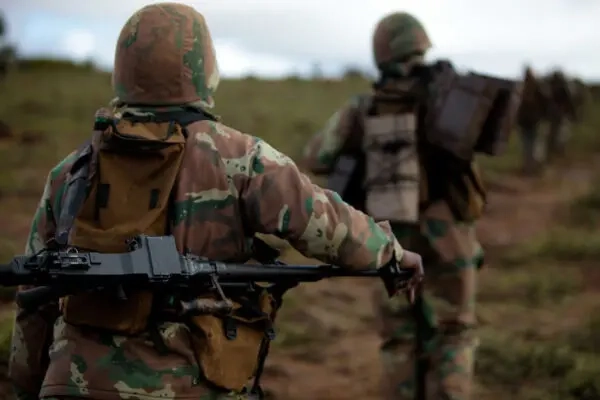South Africa’s involvement in the Southern African Development Community (SADC) Mission in Mozambique (SAMIM) has concluded, following a presidential authorization marking the end of the mission as of April 15. The South African forces, who have been a part of one of the eight SADC countries contributing equipment and troops, participated in a farewell parade on April 7, as reported by SAMIM Public Information Operations Officer Captain Tshepiso Mantjane.
The withdrawal process began with Botswana’s contingent, and the remaining six nations—Angola, Democratic Republic of Congo (DRC), Lesotho, Malawi, Tanzania, and Zambia—are scheduled to depart by July. This will leave the Rwanda Defence Force (RDF), also known as the Rwanda Security Force (RSF), as the sole foreign military presence in Mozambique, supporting the Mozambique Defence Armed Forces (FADM) against the insurgent group ASWJ, also referred to as ISIS-M.
The South African National Defence Force (SANDF) has been operating under the code name Operation Vikela, with a deployment of up to 1,495 personnel from various units, including the SA Army Infantry Formation, engineers, logistics, the SA Air Force (SAAF), and the SA Military Health Service (SAMHS). This deployment has been active for the three-year duration of the mission.
SAMIM Acting Head J Shikongo Shikongo commended the South African soldiers for their dedication, professionalism, and courage during a distinguished tour of duty, as they prepared to board their return flight to South Africa.
As the SADC troop-contributing countries (TCCs) prepare for their exit, the RDF is ramping up community policing and civil/military cooperation in Cabo Delgado. Following reports of an increased Rwandan military presence, RDF International Cooperation Head Brigadier General Patrick Karuretwa announced plans to enhance the mobility of Rwandan soldiers and train Mozambican forces to take over positions previously held by SAMIM.
The decision to conclude the regional bloc mission was influenced by financial constraints, as indicated by Mozambique’s foreign minister in late March. Veronica Macamo, after a meeting between Mozambican President Filipe Nyusi and Zambian President Hakainde Hichilema, highlighted the financial difficulties faced by the regional bloc, stating the need to prioritize their own troops and the challenges in funding SAMIM.
This marks a significant transition in the regional security landscape, with the SADC mission coming to an end and the RDF assuming a more prominent role in ensuring stability in Mozambique’s Cabo Delgado province.
The primary reason for the military intervention was the rapid spread of the jihadist insurgency by the group now known as Al Sunnah in Mozambique’s Cabo Delgado province. This insurgency posed a significant threat to regional stability, and SADC member states pressured Mozambique to allow a regional military intervention to prevent further escalation.
The insurgency also raised concerns about maritime security in the Mozambique Channel. Weak naval security along the East African coast and other security challenges, such as drug trafficking and potential piracy resurgence, added to the complexity of the mission.
The insurgents were affiliated with the Islamic State (ISIS), raising concerns that they could establish a bridgehead for expanding their operations in the region. The situation threatened the security of civilians and disrupted economic development, including a major liquefied natural gas project.
The insurgency in Cabo Delgado was amorphous and elusive, making it challenging to combat effectively. Chronic underdevelopment, poor governance, natural disasters, and disease outbreaks further complicated the situation. Violent extremists exploited these conditions to operate and gain support.


